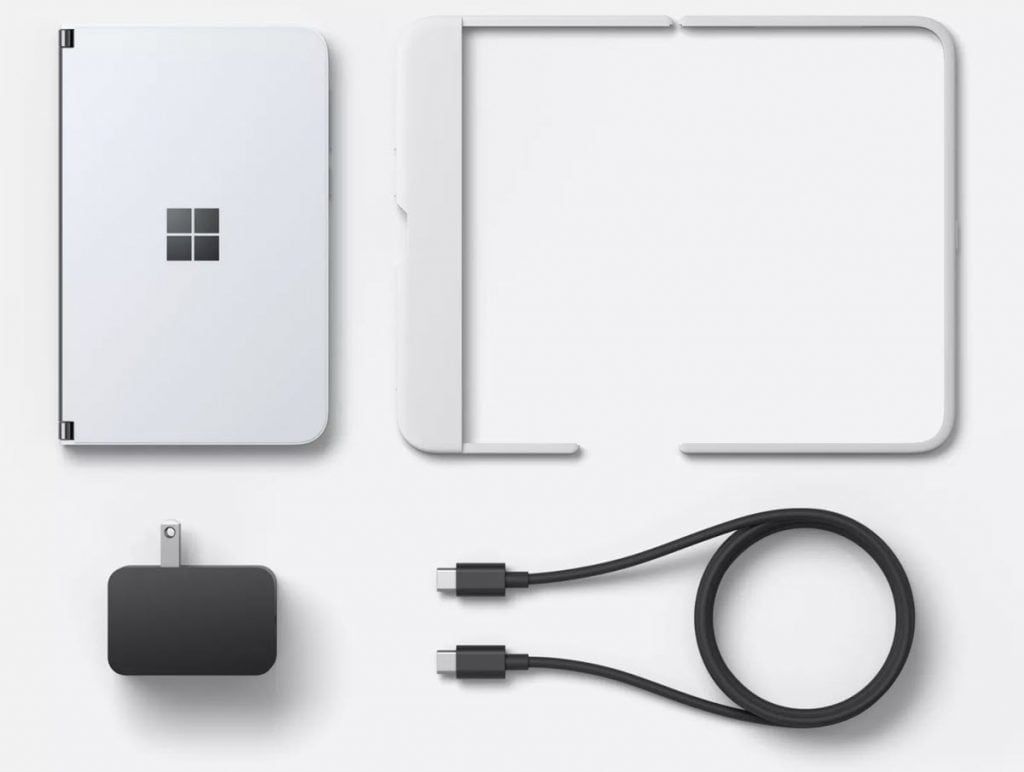Microsoft Surface Duo dual-screen Android phone finally has a launch date and a price tag. By September 10th and at over UGX 5.4 million before tax ($1,399) you can own one. After months of Microsoft executives teasing the device on Twitter, the company is now allowing anyone to preorder the Surface Duo today in some countries.
The Surface Duo dual-screen Android phone was unveiled last year in October, the company has kept the specs relatively secret. The device includes two separate 5.6-inch OLED displays (1800 x 1350) with a 4:3 aspect ratio that connect together to form an 8.1-inch overall workspace (2700 x 1800) with a 3:2 aspect ratio. Unlike foldable like Samsung’s Galaxy Fold, the Surface Duo is using real Gorilla Glass, and the displays are designed to work in a similar way to multiple monitors on a Windows PC.
When it comes to the camera of the Surface Duo dual-screen phone, Microsoft is using an 11-megapixel f/2.0 camera, which will include auto modes for low light, HDR multi-frame captures, and a “super zoom” up to 7x. Both 4K and 1080p video recording will be supported at 30fps and 60fps, with electronic image stabilization. There’s only a single camera on the Surface Duo, which can be used both for video calls and as the main camera.
The basic Surface Duo hardware also consists of a Qualcomm Snapdragon 855, 6GB of RAM, and up to 256GB of storage. LTE is available but there’s no 5G support at all. Microsoft is also shipping a bumper cover in the box, designed to protect the Duo.

Microsoft is also including two batteries in the Surface Duo, split beneath both displays. Overall there’s 3577mAh of capacity, which is considerably less than the 4500mAh found on Samsung’s single-screen Note 20 Ultra and even the 4380mAh on the original Galaxy Fold. Despite this, Microsoft is promising “all-day battery life,” which means up to 15.5 hours of local video playback, up to 10 days of standby time, and up to 27 hours of talk time. We’ll need to fully test the device during our review, but the capacity here does leave a little cause for concern as the device is powering two screens, not one.
When it comes to Apps, all Android app will run on the Duo without modification, thanks to the choice of two separate displays. Developers can also optimize the layouts of their apps to really take advantage of the two displays and span across them. Microsoft has tweaked its own apps like the Office suite and OneDrive to span the displays, and third parties like Amazon have also done work on the Kindle app to make it feel like you’re reading a book by flicking pages across the two screens.
Apps like Microsoft Teams and PowerPoint are also optimized so you can see a video call and the rest of your Teams chat, or look at a full slide and the rest of the deck simultaneously. Microsoft has been working closely with Google on Android for the Surface Duo.
Microsoft has created APIs for dual-screen apps to work in the Android codebase, and it plans to upstream them for other manufacturers and third parties to use. It will be interesting to see how developers adapt their Android apps here, and it’s key to the overall success of dual-screen or foldable devices in general.


